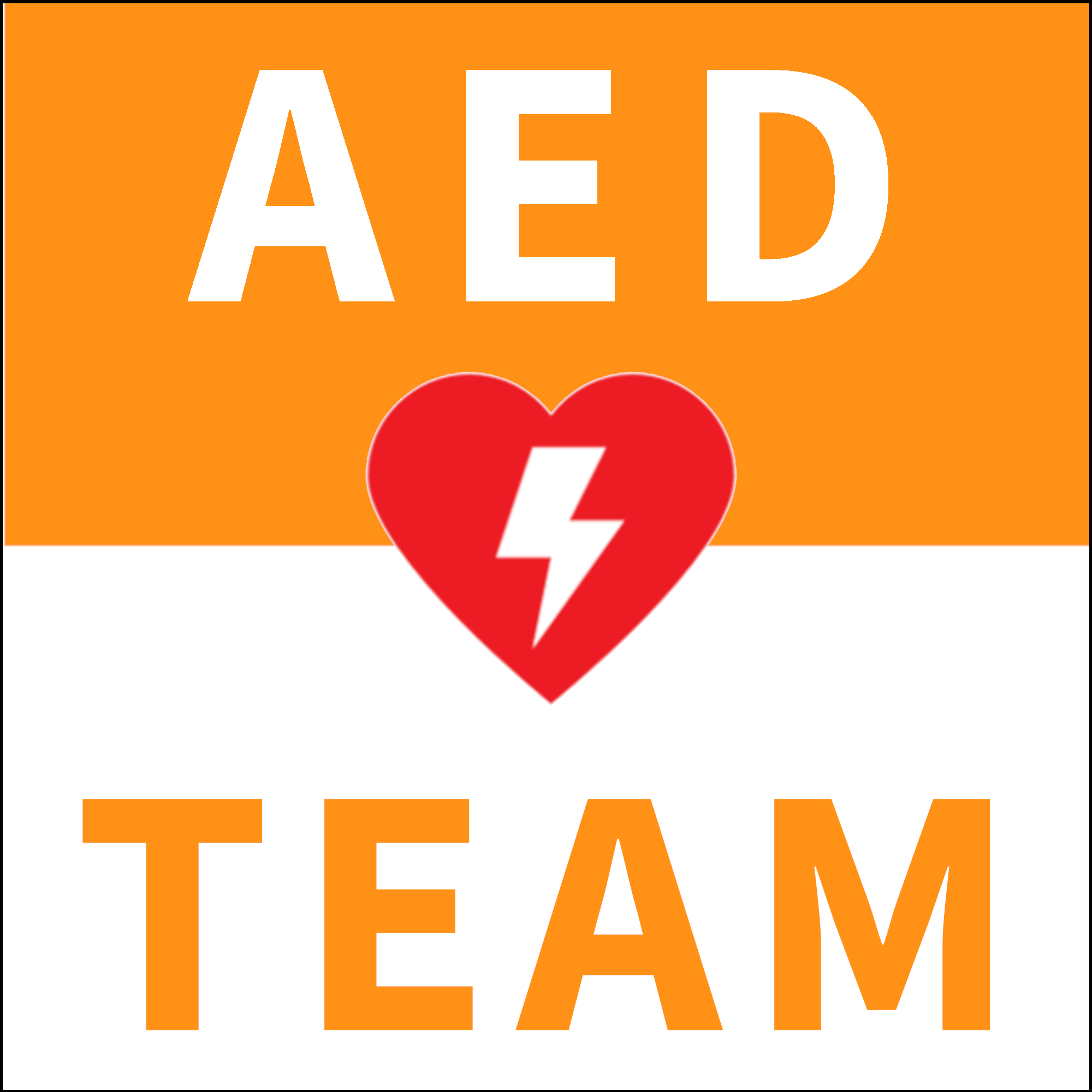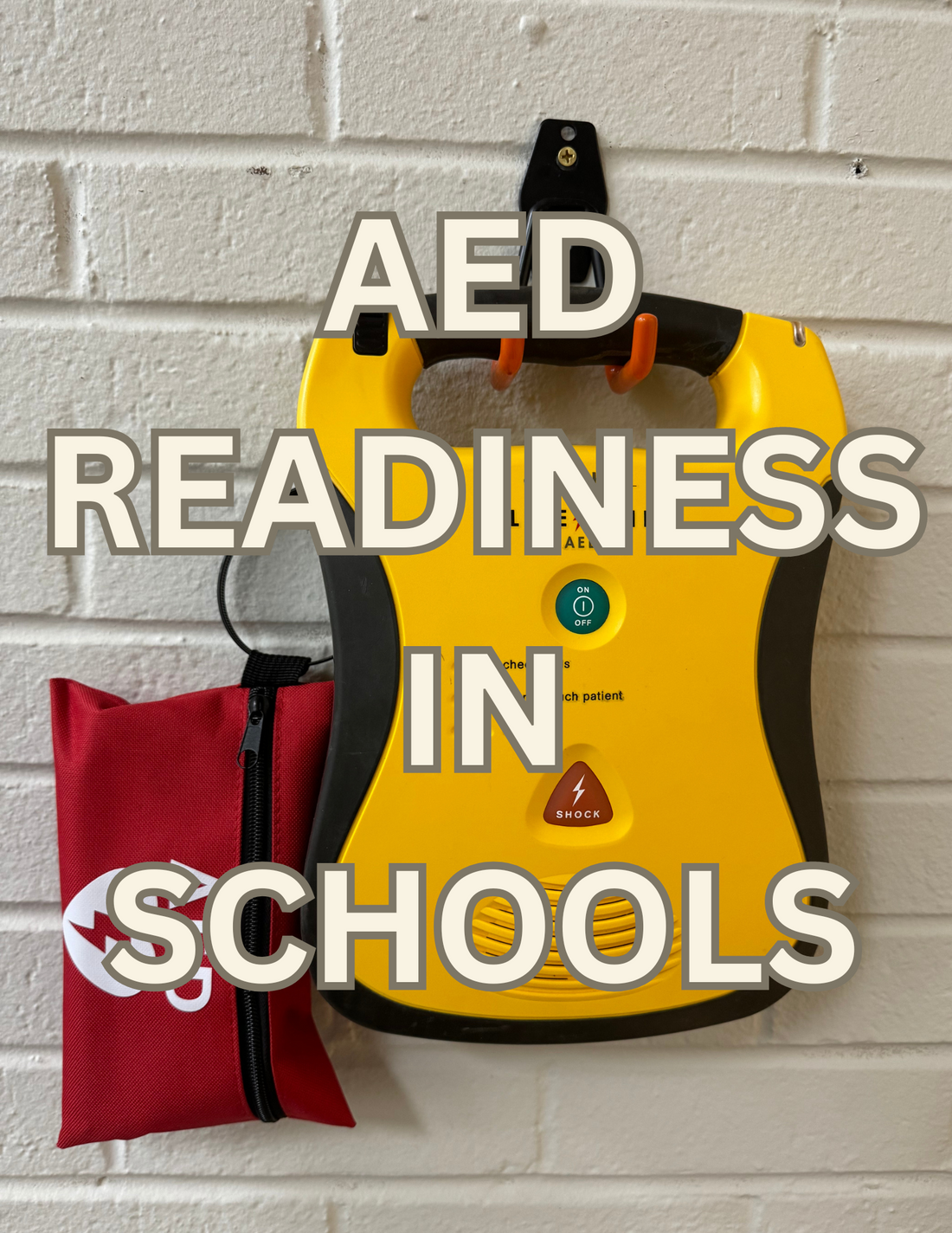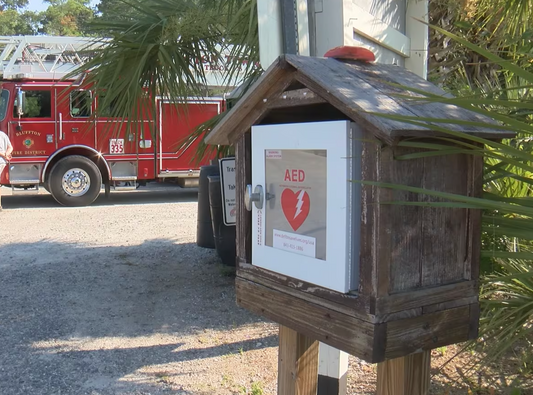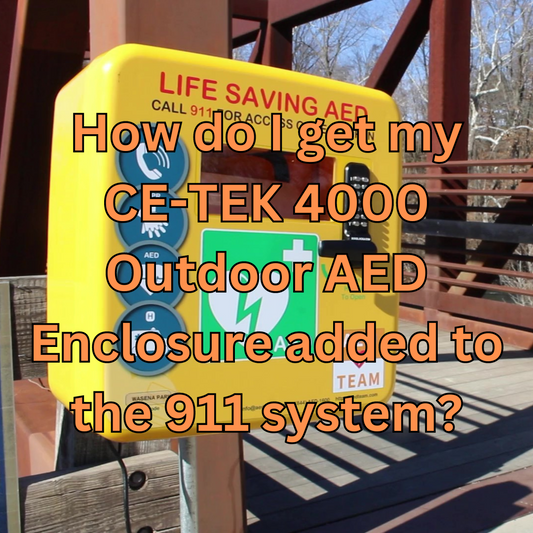My heart drops like a stone into my stomach every time I see a news alert about a youth and sudden cardiac arrest (SCA). As a parent and cardiac advocate, it’s painful to hear of the occurrence of SCA in a child, even when there’s a positive story of survival.
A tragic story of a Houston student who collapsed during gym class was reported in the news recently (August 2024). Things started off as perfectly as one can hope in this scenario: staff at the school immediately recognized the emergency and started CPR while someone was sent to retrieve the Automated External Defibrillator (AED). Unfortunately, the AED was reported to not be ready for rescue and could not be used. The involved student later died. It is impossible to know whether the AED, had it been ready for use, would have changed the outcome, but immediate defibrillation paired with high quality CPR is the best known treatment for cases of SCA.
The stone in my stomach turned to a raging fire when I learned the next facts. Concerned journalists dug deeper into this issue and found that 170 AED units in the Houston Independent School District (HISD) had been reported as not ready for a response, however, due to budget constraints, the district did not have funds to make those devices operational leaving students and staff at risk.
A separate but similar report out of Albuquerque, NM last October resulted in the school district removing all 185 AED units from their schools since they could not afford to keep them ready for rescue. While this likely relieved the school from legal negligence if a non-functional device was used in an emergency, it is obviously detrimental to the standard of care expected in school buildings - that a functional AED unit will be available at all times.
AEDs are not regulated in building or fire codes and only a small number of states actually have laws requiring them. Unlike a fire safety violation that could shutter a building until it is corrected, most schools are still able to legally operate despite not having operational AED units.
Schools, markets, gyms, hotels, and other public places, through good intent or in compliance with state laws, will often purchase AED units for public placement. In many cases however, they fail to properly maintain these devices, rendering them useless in an emergency.
Manufacturer recommendations vary on the frequency to check AED units, ranging from monthly to quarterly inspections. These inspections only take a few minutes to complete and ensure that the device is in operable condition at the time of inspection. Services like AED365, are available to manage AED deployments, track inspections, and monitor when devices will need replacement parts.
All devices perform routine self-tests to confirm all of these items are operable and will provide some visual indicator of that self-test being satisfactory such as a flashing green light, the word “OK” in an LCD screen, or a green check mark or circle on the handle. Most (though not all) AED units will also make an audible beep if the device fails a self-test that should trigger people nearby to report that the device needs attention. AED units can fail a self-test for one of three reasons - the pads are no longer usable, the battery charge is low, or the device circuitry has failed.
Devices that do not display a positive readiness indicator (a red “X” or red dot, a red battery or wrench indicator on the screen, not flashing a light or making an audible beep) need attention right away. Checking the expiration date printed on the pads and the battery are two starting points to see what could be wrong with the AED.
As an AED professional, my family and I make a game out of who is the first to find the AED whenever we walk into a public place. After we identify the AED location, we also look to see if the readiness indicator is visible and shows that the device is ready. Unfortunately we routinely identify devices that display a negative readiness indicator.
On a few occasions, letting staff know that their AED is non-functional has been met with dismissive or argumentative responses. “We have someone that checks it” or “It’s fine” are a couple examples that have been said to me when reporting a problem. I’ll briefly explain how I know that the AED is not operational and share ways that they can correct the problem. After that, we walk away hoping that the message is received not as a pitch, but a true appeal that they fix the problem so they are prepared
AED units are life-safety equipment which require a routine simple inspection to ensure that they are ready for use in an emergency. Agencies should ensure that inspections are being conducted on their devices according to manufacturer standards. Public reports (if you see something, say something) of AED unit issues should be taken seriously and treated urgently to ensure that the device is ready for use in an emergency.
I hope I will never again hear of stories of cardiac arrests occurring without available or functioning equipment. I believe it’s possible - think about how tightly fire extinguishers and fire suppression systems are monitored for readiness. I have personally gone to Washington DC to participate in efforts to push representatives to sign legislation better protecting this equipment. But until this happens, I know the fire will blaze in my stomach and I will continue to advocate for access to ready AEDs to prevent needless tragedies.




